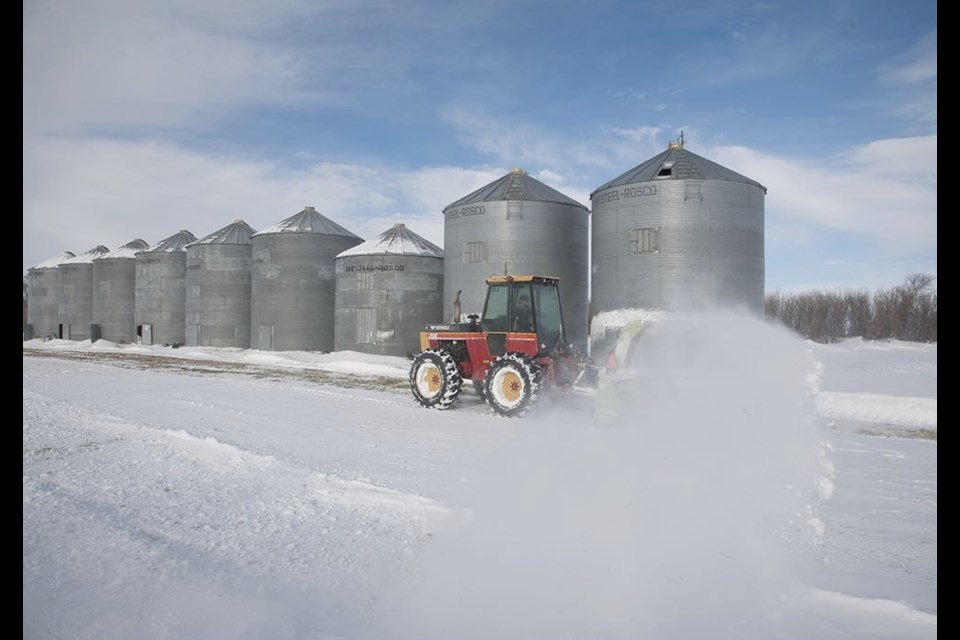WESTERN PRODUCER — The moisture outlook for the Canadian Prairies looks vastly improved for the 2023 growing season, says a weather expert.
The March 2023 drought map is a big upgrade over the one from a year ago.
It is still dry throughout much of the growing region, but the extreme drought that existed in eastern Alberta and western Saskatchewan at this time last year has been eliminated.
“The long and the short of it is, we’re in a better situation in 2023 than we were in 2022 on the grand scheme of the western Canadian Prairies,” said Eric Snodgrass, Nutrien’s principal atmospheric scientist.
“It’s not as worrisome as it was a year ago.”
Good winter snowfall ate away at the drought. The mid-April snowstorm that affected much of the region also helped, although many people aren’t thrilled with snow that late in spring.
“Hey, it’s moisture, and we’re always kind of on the cusp of having to worry about moisture every year,” said Snodgrass.
But the region still needs ample spring and summer rain to fully recover from three years of La Nina, and there is good news on that front.
“We’ve got an El Nino coming in the Pacific Ocean and generally speaking that tends to lend itself to more summer thunderstorm activity,” he said.
The U.S. National Oceanic and Atmospheric Administration predicted a 75 percent chance of El Nino being in place during June, July and August.
That tends to result in ridging over Oregon, Washington and British Columbia, creating hot and dry conditions in those areas.
The ridging typically results in more thunderstorms in east-central Alberta through Saskatchewan and Manitoba.
The storms usually move in a trajectory from northwestern Alberta to southeastern Manitoba. They may not hit western Alberta because of the “rain shadow effect” of the Rocky Mountains.
Snodgrass said the El Nino appears to be rapidly developing and is already having an influence on spring weather, as evidenced by the mid-April snowstorm.
Jeremy Welter, a director with the Agricultural Producers Association of Saskatchewan, said it is plenty dry on his farm near Kerrobert, Sask.
“I am still incredibly stressed about the moisture situation,” he said.
“It is far drier than I think a lot of people realize or are potentially willing to admit.”
His farm received plenty of rain at the start of the growing season last year but then the taps turned off around mid-July and never came back on.
“Our ground moisture is incredibly depleted,” said Welter.
He could have gone outside on a -30 C day in the middle of January and started digging a hole in his yard with a spade.
“There was no frost in the ground,” he said.
“It was so dry to the point that there was no moisture to bind the soil together and actually freeze.”
Welter will not bank on the prospect of increased El-Nino-related thunderstorms, but Snodgrass’s forecast provides him with some optimism.
However, when he hears of increased storm activity, the first thing that comes to his mind is a higher probability of getting hailed out.
He remembers driving down Highway 51 a few years ago and it looked like somebody had been out with a lawn mower.
Snodgrass said the ridging he expects over British Columbia will not be as severe as it was during the summer of 2021, which resulted in a massive heat wave that broke many temperature records.
But it will be hot enough that the jet stream retreats north, heads over the Rockies and causes more thunderstorms throughout much of the Prairies.
Snodgrass has learned to word things carefully when doing weather forecasts for the agriculture sector.
“If you tell a farmer there is a better chance of it being wet and it’s not wet, they’re going to eat you alive,” he said.
“But if you say there’s a lower chance that it’s going to be dry compared to normal, then if it is a little dry, they don’t bite your head off.”
So, he’s going to play it safe and just say there is a lower probability of drought expansion in 2023 if El Nino materializes as predicted.
He noted farmers may be delayed getting into fields this year because of the late-season snowfall and the lack of hot April weather.
The hope is that the region will gradually warm in May, putting more water into the soil and avoiding the flooding and erosion that can occur with a rapid spring thaw.




